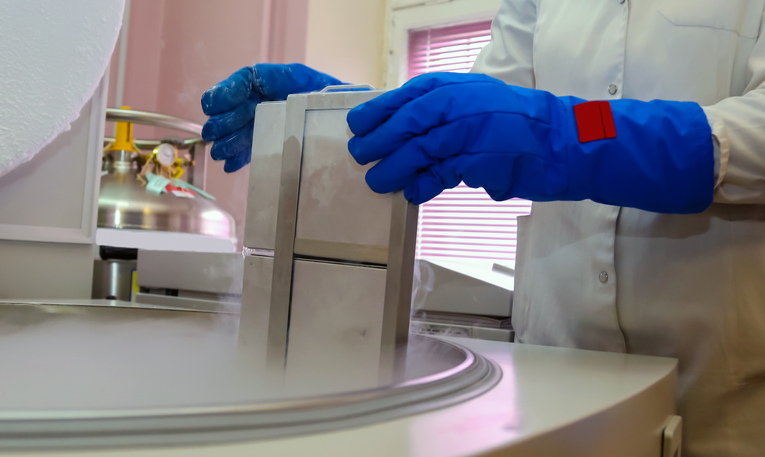With a pandemic threatening the health and safety of Emory researchers in March 2020, university leadership made the difficult decision to ramp down some types of research. For investigators that use laboratory mice or rats in their research, this posed a significant challenge.
How could investigators maintain valuable, often unique, lines of genetically engineered animals for future research? The Mouse Transgenic and Gene Targeting Core (TMF) had a solution: cryopreservation. Animals’ sperm — and occasionally, embryos – can be carefully preserved in cold-resistant straws and stored in liquid nitrogen.
“Cryopreservation is a reliable and efficient method for archiving and distributing genetically engineered mouse lines,” says Karolina Piotrowska-Nitsche, PhD, director of the Core.
The TMF is located on the ground floor of the Emory Health Sciences Research Building and provides a suite of services related to transgenics and gene editing, working with tools such as CRISPR/Cas9 to make subtle or complex changes in the DNA of living animals.

Looking ahead, taking these steps meant that investigators would be able to continue their wide-ranging research when Emory began expanding its research in June 2020. But the impact of the Mouse Transgenic and Gene Targeting Core (TMF) extended outside of Emory University.
Members of the Georgia Core Facilities Partnership, which includes all the university members of the Georgia Research Alliance, have an agreement whereby investigators from any of the member institutions can use core facilities at other institutions their internal rates. In total, 73 mouse lines and 2 rat lines were preserved for Emory investigators, and 35 mouse lines were preserved for investigators from other Georgia institutions.
“Basically, in 3 months, we cryopreserved as many lines as we usually do in 3 years,” Piotrowska-Nitsche says.
“Helping to manage this adverse situation demonstrated the value the Georgia Core Facilities Partnership provides to the statewide research community,” says Michael Zwick, PhD, associate vice president for research at the Woodruff Health Sciences Center and associate dean of research at Emory University School of Medicine.

